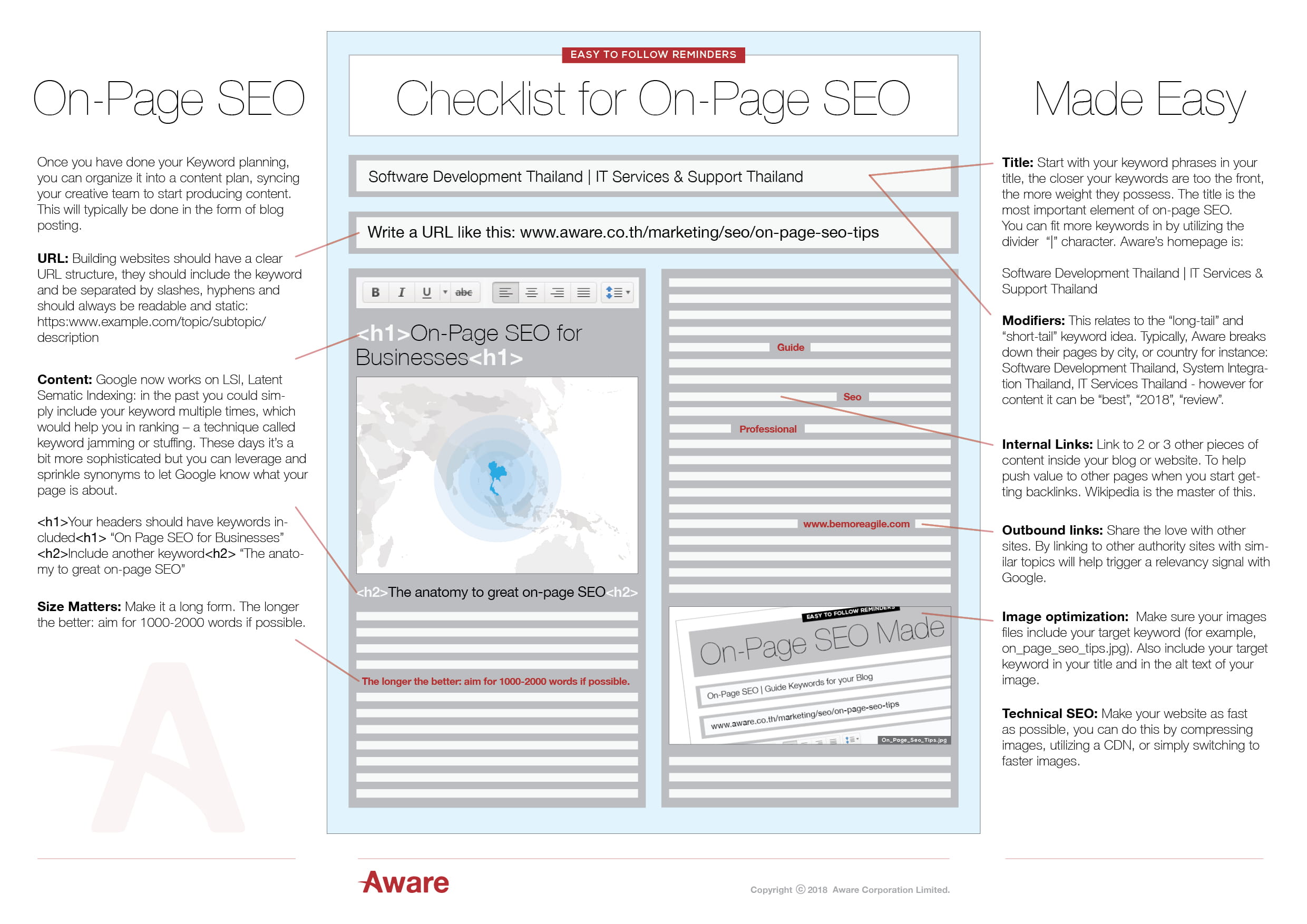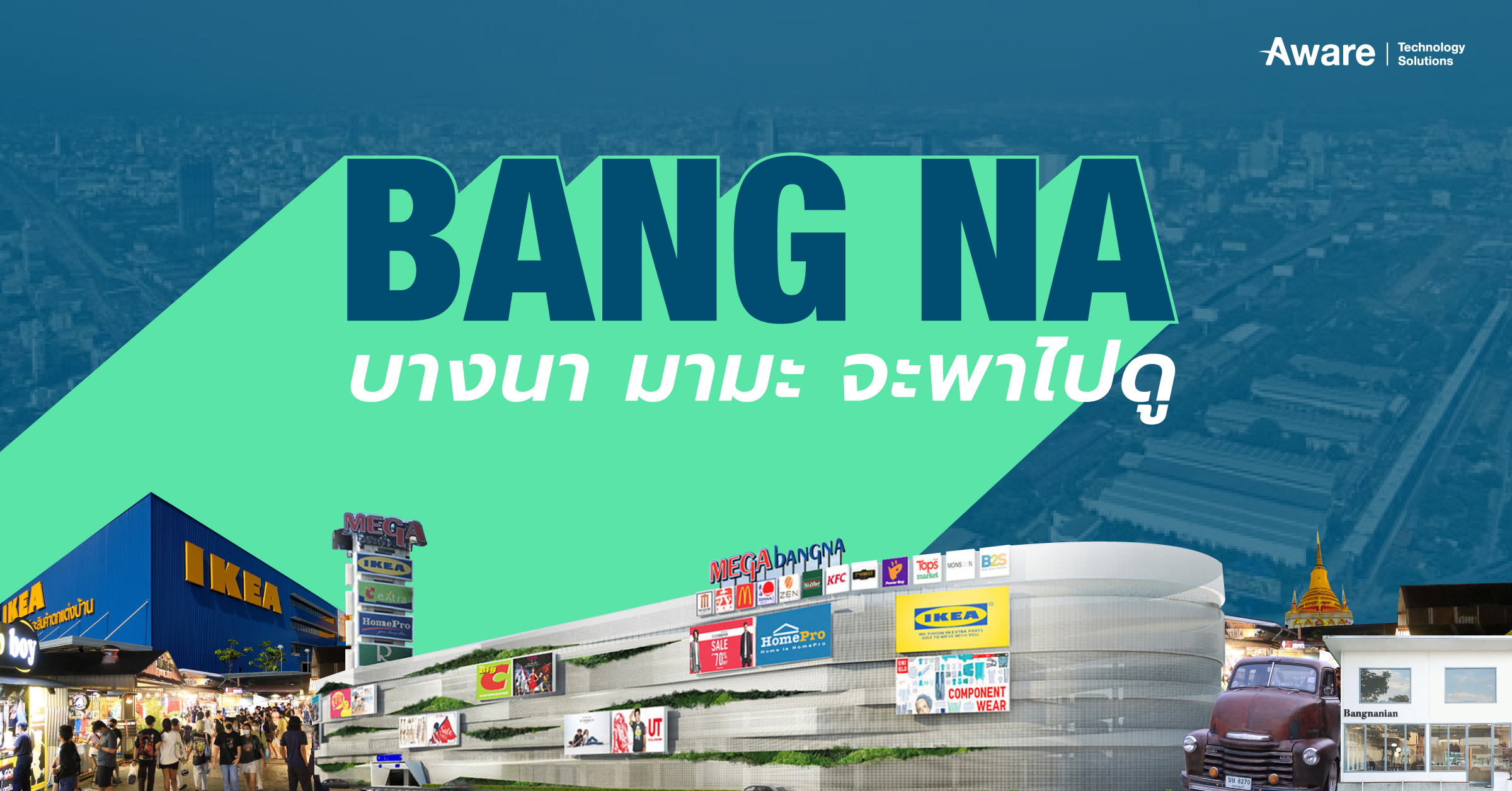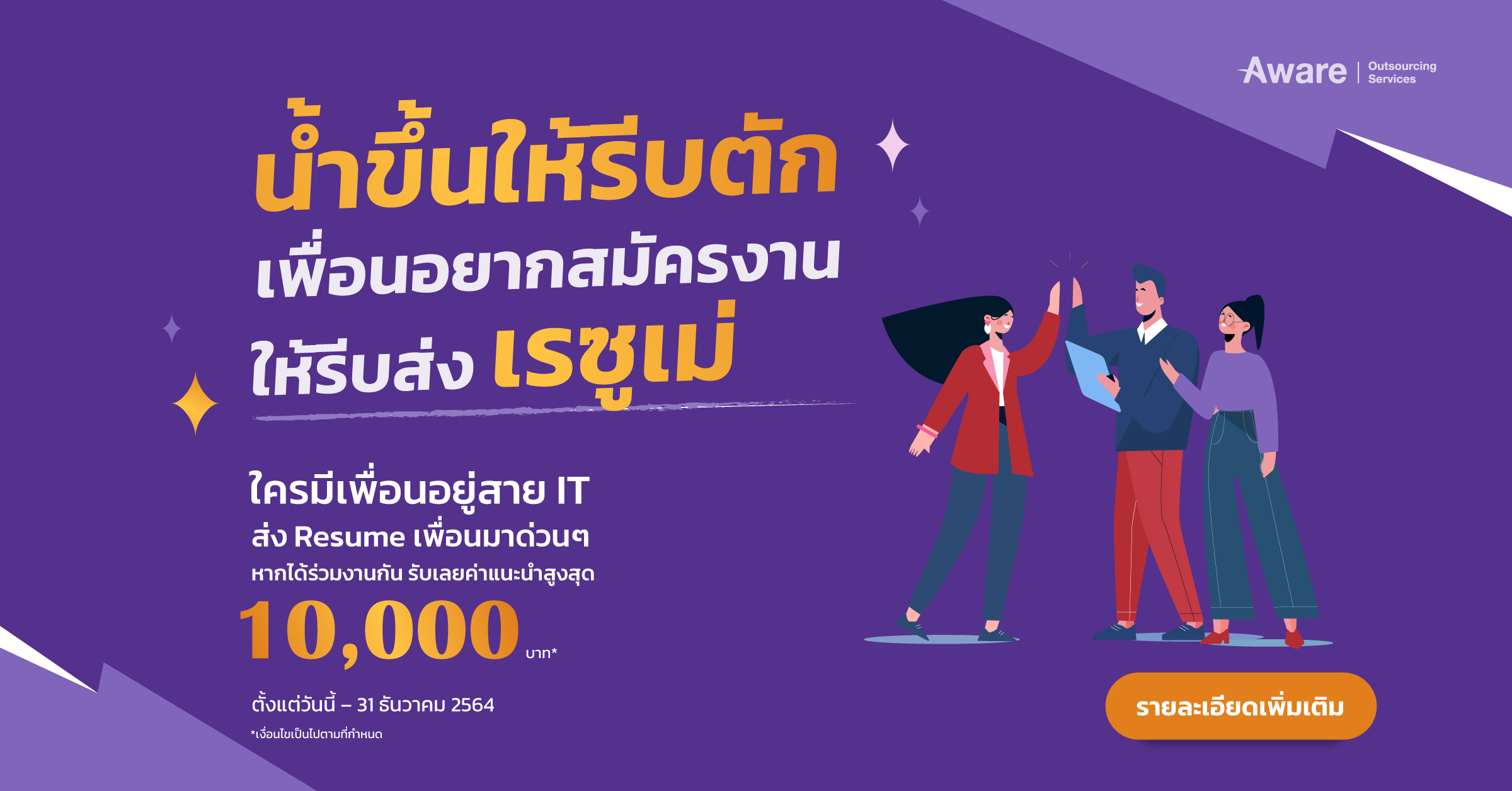
28 May On-page SEO (Infographic)
Once you have done your Keyword planning, you can organize in into a content plan, syncing your creative team to start producing content. This will typically be done in the form of blog posting.
Title: Start with your keyword phrases in your title, the closer your keywords are too the front, the more weight they possess. The title is the most important element of on-page SEO. You can fit more keywords in by utilizing “|” character.
Aware’s homepage is: “Software Development Thailand | IT Services & Support: Thailand
Modifiers: This relates to the “long-tail” and “short-tail” keyword idea. Typically Aware breakdown their pages by city, or country for instance: Software Development Thailand, System Integration Thailand, IT Services Thailand – however for content it can be “best”, “2018”, “review”.
URL: Building websites should have clear URL structure, they should include the keyword and be separated by slashes and hyphens IE: https:www.example.com/topic/subtopic/description. They should always be readable and static.
This article ideally should have a URL breakdown as follows: www.aware.co.th/marketing/seo/on-page-seo-tips
Content: Google now works on LSI, Latent Sematic Indexing: in the past you could simply include your keyword multiple times, which would help you in ranking – a technique called keyword jamming or stuffing. These days it’s a bit more sophisticated but you can leverage and sprinkle synonyms to let Google know what your page is about.
<h1> Your headers should have keywords included <h1> “On Page SEO for Businesses”
<h2> Include another keyword<h2> “The anatomy to great on-page SEO”
Make it long form: The longer the better: aim for 1000-2000 words if possible.
Internal Links: Link to 2 – 3 other pieces of content inside your blog or website. To help push value to other pages when you start getting backlinks. Wikipedia is the master of this.
Outbound links: Share the love with other sites. By linking to other authority sites with similar topics will help trigger a relevancy signal with Google.
Image optimization: Make sure your images files include your target keyword (for example, on_page_seo_tips.jpg) also include your target keyword in your title and in the alt text of your image.
Technical SEO: Make your site as fast as possible, you can do this by compressing images, utilizing a CDN, or simply switching to faster images.
- SAP Business One Vs Microsoft Dynamics 365 - November 12, 2021
- SAP Business One in Manufacturing - November 4, 2021
- 5 Benefits of SAP B - October 20, 2021
- What is SAP Business One? - October 11, 2021
- Digital Marketing Plan for International Schools: Targeting Effectively - August 10, 2021
- Track Contact Form 7 Submissions & Link Google Analytics Goals - September 14, 2020
- Audience Reporting Explained: How Do I Use it for My Business? - July 2, 2020
- What is Realtime Reporting in Google Analytics & What’s the Real Business Benefit? - June 29, 2020
- What is the Difference Between Business Continuity & Disaster Recovery? - April 2, 2020
- The Best WFH Business Software Solutions for Remote Employees - March 30, 2020



